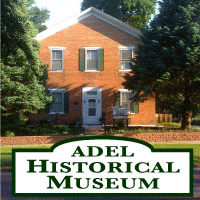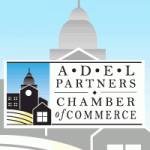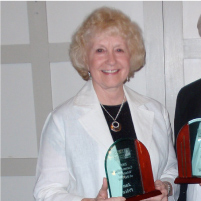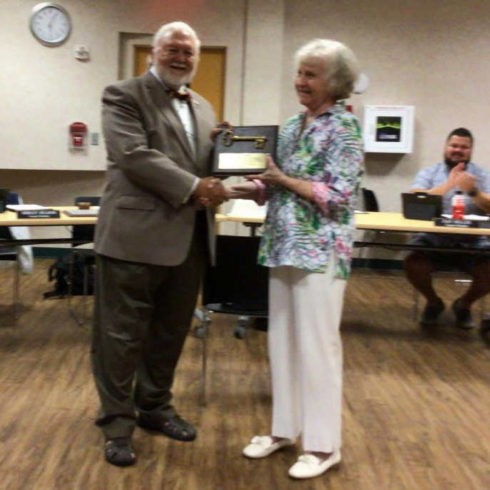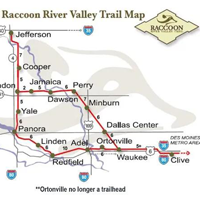Search Results for: Nile Kinnick Museum
Nile Kinnick Museum Kickoff – Aug. 20th
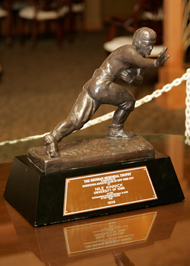 A Conversation on Nile Kinnick, with Jim Zabel and Mile Chapman, hosted by Jon Miller will be an informative and entertaining evening.
A Conversation on Nile Kinnick, with Jim Zabel and Mile Chapman, hosted by Jon Miller will be an informative and entertaining evening.
Featuring three of Iowa’s most noted sports journalists, Mr. Zabel will be here via satellite hook up from Phoenix.
This event is the kick-off for the upcoming Nile Kinnick Institute & Museum Fund Raising Project.
The event is Saturday, August 20th 7:00p.m. at the ADM High School Auditorium.
Tickets are $10.00 and may be purchased at the door the evening of the event or tickets online at nilekinnickmusem.com
Nile Kinnick Museum Article
We’ve had several requests to re-run the March Newsletter article we ran on Nile Kinnick. With the passing of June and the anniversary of his death, it seems only fitting to honor one of Adel’s native sons. We hope that you enjoy. (July 17, 2009)
– Courtesy: Julie Bailey – Adel Partners Chamber of Commerce.
 The community of Adel is well-known for its brick streets, beautiful County Courthouse, and the Sweet Corn Festival. Adel is also the hometown of Nile Clarke Kinnick Jr., the winner of the 1939 Heisman Trophy for the University of Iowa. The football stadium at the University of Iowa is named in his honor.
The community of Adel is well-known for its brick streets, beautiful County Courthouse, and the Sweet Corn Festival. Adel is also the hometown of Nile Clarke Kinnick Jr., the winner of the 1939 Heisman Trophy for the University of Iowa. The football stadium at the University of Iowa is named in his honor.
The Adel Historical Museum and Adel Partners Chamber of Commerce are pursuing a vision for a Nile Kinnick Wing of the current historical museum in Adel.
In April 2009, a few select pieces of Nile Kinnick memorabilia will be available through an online auction. The Adel Historical Museum is fundraising in an effort to purchase all or part of this memorabilia and bring it home to Kinnick’s community where he spent his childhood. This would also complement the Kinnick items currently held in the Adel community and support the beginnings of a museum addition to highlight Kinnick’s life.
Nile Kinnick was born on July 9, 1918, in Adel, Iowa, the grandson of a governor. His grandfather, George Clarke was Governor of Iowa from 1913 to 1917 and practiced law in Adel. Nile was a star athlete in football and basketball at Adel High School before the family moved to Omaha, Neb., after his junior year.
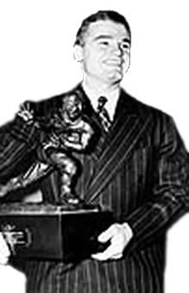
In 1939, Irl Tubbs was out as coach, Eddie Anderson was in, and the path was cleared for Kinnick’s senior season at the University of Iowa. A halfback who was the team’s main passer, Kinnick threw for 638 yards and 11 touchdowns as well as rushing for 374 yards on 106 carries (3.5-yard average). He also made 11-of-17 dropkick conversion attempts and scored 41 points. By passing, running or kicking, Kinnick was directly involved in 107 of Iowa’s 130 points that season. He also made eight interceptions. He finished his career at Iowa with 1,674 yards rushing, 18 interceptions (an Iowa record that lasted half a century) and an average of 39.9 yards per punt.
The Chicago Tribune’s version of the Big Ten MVP award preceded Kinnick’s winning the Walter Camp and Maxwell awards, further validating the prevailing opinion he was the nation’s best football player. On Dec, 6, 1939, his acceptance of the Heisman Trophy became a seminal moment – both in athletics and in oratory. Kinnick’s celebrity became so strong, he was named 1939’s top male athlete in the country by the Associated Press. The honor was particularly noteworthy considering his competition included Joe DiMaggio, Joe Louis and Byron Nelson.
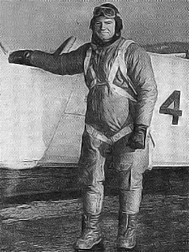 In August 1941, Kinnick decided war was imminent and joined the Naval Air Corps Reserve. While waiting to be called to active duty, he was an assistant coach for Iowa that fall. On December 4, three days before Pearl Harbor, he reported for duty. On June 2, 1943, Kinnick was flying a training mission from the U.S.S. Lexington off the coast of Venezuela when he experienced engine problems. Rescue parties searched for several hours, but Kinnick’s body was never found amid the oil slick. Nile Kinnick was 24.
In August 1941, Kinnick decided war was imminent and joined the Naval Air Corps Reserve. While waiting to be called to active duty, he was an assistant coach for Iowa that fall. On December 4, three days before Pearl Harbor, he reported for duty. On June 2, 1943, Kinnick was flying a training mission from the U.S.S. Lexington off the coast of Venezuela when he experienced engine problems. Rescue parties searched for several hours, but Kinnick’s body was never found amid the oil slick. Nile Kinnick was 24.
“A Nile Kinnick wing of the Adel Historical Museum would be a tremendous asset to the Adel community and the state of Iowa.” says Julie Bailey, Program Director for the Adel Chamber of Commerce. “Kinnick’s legacy is so large and it only seems fitting to honor him in the town he loved so much.” she continued.
Anyone interested in learning more about the Kinnick museum planning process or is interested in making a tax deductible contribution toward the purchase of the memorabilia to begin the new museum effort can contact Adel Partners Chamber of Commerce via email at chamber@AdelPartners.Org or phone 515-993-5472.
Work Begins on the Nile Kinnick, Jr. Museum Addition
Work has begun on the Nile Kinnick, Jr. and the Governor George Washington Clarke addition to the Adel Historical Museum.
Thank you to everyone who has supported this project, including the Dallas County Foundation.
More photos available on the City of Adel Facebook page.
Adel Historical Museum and Kinnick Clarke addition
1129 Main Street
Adel, Iowa 50003
Phone: (515) 993-1032
Remembering Nile Kinnick’s Heisman Trophy Speech Dec 06
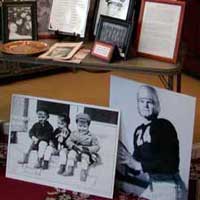 Today marks the 84th Anniversay of Nile Kinnck’s Heisman Trophy Speech. December 6th. 1939.
Today marks the 84th Anniversay of Nile Kinnck’s Heisman Trophy Speech. December 6th. 1939.
Remembering Nile Kinnick on the anniversary of his iconic Heisman speech – KCCI
“ADEL, Iowa — It was Dec. 6, 1939, when Adel native and Hawkeyes football star Nile Kinnick received the Heisman Trophy.
Kinnick delivered an acceptance speech that night at the Downtown Athletic Club in New York that has become part of Hawkeyes lore. The speech is now played over the loudspeaker before each home game at Kinnick Stadium.
“I thank God I was warring on the gridirons of the Midwest and not on the battlefields of Europe. I can speak confidently and positively that the players of this country would much more, much rather struggle and fight to win a Heisman award than a Croix de Guerre,” said Kinnick, who at that point said he planned to join the Naval Air Service after graduation.
Kinnick died less than four years later when, in June 1943, his plane experienced engine issues during a training flight and crashed off the coast of Venezuela. He was just 24.
Watch the video to learn more about Nile Kinnick and a documentary about him that was released last year.”
Adel Historic Museum Hosts River to River Retro Road Trip
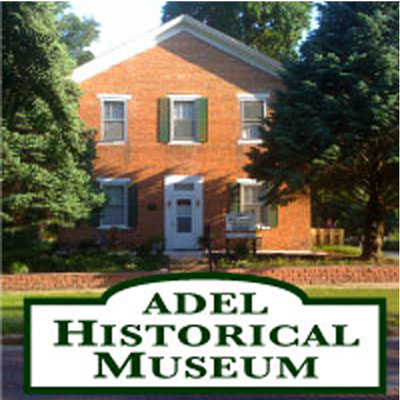
Annually, the River to River Retro Road Trip begins in Davenport and ends in Council Bluffs, following Historic US Route 6 across Iowa over four days.
This year’s trip saw about 40 cars with drivers and some passengers make the trek September 14-17, 2023.
No Interstates, No Chain Restaurants, Just Mom & Pops and Two-Lane Blacktop is the plan. One of the stops this year was at Adel’s Historic Museum Saturday morning, touring the two-story building and the Clarke-Kinnick Addition.
The Museum found it had a copy of a booklet of a previous River to River Retro Road Trip from 1910, surprising this year’s trip organizers Casey McCallister and Vince Wallerich.
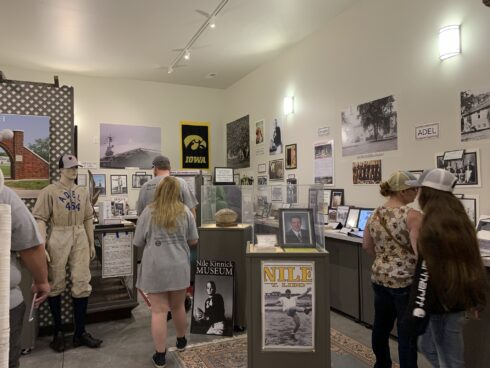
While the visitors enjoyed tours of the Museum, area residents could view the many antique cars parked on nearby streets.
One car of note was not an antique but was specially decorated with the River to River logo displayed by Margaret Baumann from Rockford, Illinois, and her daughter.
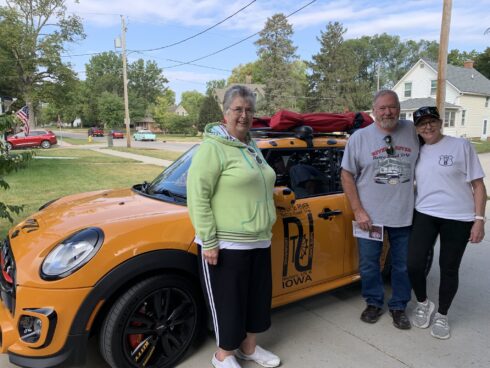
Pictured, left to right, in front of the special River to River car are Margaret Baumann and Rex and Shelley Martin from Marion, Iowa.
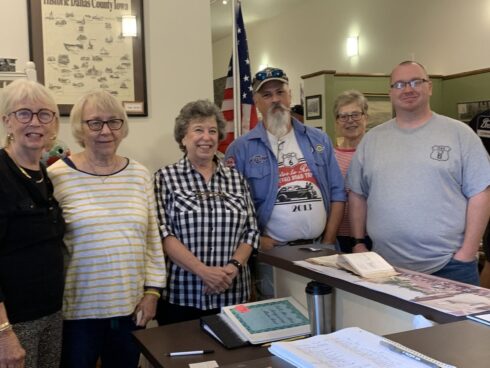
Hostesses pictured, left to right, with River to River Retro Road Trip organizers were Cathy Jorgensen, Bev Carrico, Nadine Law, Vince Wallerich, Becky Dymond, and Casey McCallister. Conducting tours but not pictured were Mary Ockerman and Karen Smith.
Adel Historical Museum and Kinnick Clarke addition
1129 Main Street | Adel, Iowa 50003
Website: Adel-Historical-Museum
Visiting Hours: May through September, Saturdays from 12 pm to 4 pm.
Open By Appointment Other Days:
Please call Beverly Carrico at (515) 238-8264
Veteran’s Flag Marker for Nile Kinnick Jr
 Adel American Legion Post 464:
Adel American Legion Post 464:
Did you know that there is a veteran’s flag marker for Nile Kinnick Jr. near the plaque for Kinnick Feller Park?
Take a look the next time you are near the marker at 9th Street on the east end of the parking lot near the football field.
The landscaping is courtesy of the ADM Alumni Association, honoring two hometown heroes. See ADM Alumni Honored Military.
Even though Nile is not buried in Adel, he is Adel’s native son and one of our fallen veterans that will not be forgotten. More Nile Kinnick Aricles
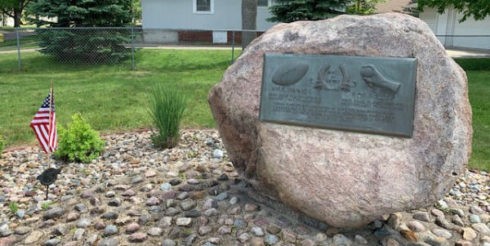
American Legion Penoach Post 464
Post 464 119 N. 9th. St. | Adel IA 50003
Phone: (515) 993-4080
Facebook: AmericanLegionPost464
Adel Party to Commemorate Kinnick’s 100th Birthday July 7th
Adel Partners Chamber, City of Adel, FRYfest to Commemorate Kinnick’s 100th Birthday
On Saturday, July 7, a private ribbon cutting celebration will be held at the Kinnick Addition of the Adel Historical Museum at 10:00 am followed by a community gathering until 2:00 pm at the Adel Pavilion (located at 10th and Main St.)
FRYfest, Coralville’s annual celebration of all things Hawkeye, which takes place annually on the Friday before the first home football game, will be on hand to help celebrate. Kinnick’s 100th birthday will be a focus at this year’s FRYfest on August 31 in the Iowa River Landing in Coralville. With the assistance of the University of Iowa Athletics Hall of Fame, FRYfest will bring a bust of Kinnick to the event in Adel.
Dora Mason, a long time Iowa City resident and UI graduate, sculpted the bust in 1940. Mason and Kinnick became friends and she observed him while he studied for a final exam. She sculpted the bust out of clay, later to be cast in bronze.
Also in attendance will be the author of the book Nile, T. Lidd; producer of the upcoming movie The Ironmen, Joe Heath; and Herky the Hawk.
The event is open to the public at the Stage and Pavilion with birthday cake and selfies with Kinnick bust.
Adel Partners Chamber of Commerce
PO Box 73, 301 S.
10th Street, 2nd Floor
Adel, IA 50003
Email: chamber@AdelPartners.Org
Website: www.adelpartners.org
Facebook: AdelPartnersChamberOfCommerce
Nile Kinnick Event with Jim Zabel & John Miller
 A Conversation on Nile Kinnik, with Jim Zabel & Jon Miller” will be an informative and entertaining evening.
A Conversation on Nile Kinnik, with Jim Zabel & Jon Miller” will be an informative and entertaining evening.
Featuring two of Iowa’s most noted sports broadcasters, Mr. Zabel will be here via satellite hook up from Phoenix.
They’ll be headlining for the upcoming Nile Kinnick Institute & Museum project.
The event is Saturday, August 20th 7:00p.m. at the ADM High School Auditorium.
Tickets are $10.00 and may be purchased at the Nile Kinnick Institute & Museum booth during the Adel Sweet Corn Festival.
Jan Price and the History of Adel, Iowa
Reissued from the DiscoverAdel.com April 2009 Newsletter
DiscoverAdel.com has asked Jan Price of the Adel Historical Society to help showcase this theme by highlighting the historical points of reference throughout the history of Adel.
Jan has been the volunteer manager of the historical museum for the past 4 years. She grew up in Adel, and recently returned to the community with her husband Donald in 1999.
When they retired, after more than 30 years of professional careers in education, they moved to Adel and purchased a home on Locust Street.
Jan and Donald love living in Adel and have become active in various organizations. Jan was gracious enough to help DiscoverAdel readers answer the questions of how this small community came to be.
Q.What is a brief history of Adel?
Dallas County was made available for settlement on April 30, 1843. A year previous the land was purchased from the Sac and Fox Indians and it was stipulated in the contract that all Indians were to be removed within a period of 3 years.
In 1846 Iowa was admitted into the United States. James Polk was President and the Vice President was George Mifflin Dallas. Our county was named after him.
In 1846 our county was organized. The first settler in Adel Township was Samuel Miller who settled in what became known as the Miller Settlement. It was a short distance east of where Adel was later built.
There is a stone monument on the north side of Highway 6 marking the settlement and the Miller cemetery is on the south side of the highway. There the first sheriff of Adel, Jesse K. Miller, is buried. Samuel Miller built his log cabin during the winter of 1847-48 and used it for the 1st schoolhouse in Dallas County.
In 1847 a new town given the name of Penoach, an Indian word meaning “far away” came into existence. The original town plot extended from the Raccoon River to High (11th) Street and from Grove Street south to Greene Street.
This town not only became Dallas County’s first settlement to be classed as a town but it was selected as the county seat by the state legislature that same year. About 2 years afterward in the fall of 1849 the name of Penoach was changed to Adel in honor of “a very pretty child with a prettier mother”.
Q. Who can be considered the “Founding Fathers” of Adel?
Leroy Lambert: During his life in Dallas County, he was one of the leading businessmen.
He was elected to the state legislature in 1853,1858, 1860, 1861, and 1869. In 1868 he entered into banking opening the first bank in Dexter, Iowa with Martin Smith. Later, in 1869 they opened the Dallas County Bank in Adel.
In 1850 he was active in starting up the Christian Church.
Dr. T. J. Caldwell came to Adel in 1853. He was repeatedly elected to Mayor. He was the president of the railroad built from Waukee to Adel and continued its president until after its extension to Jefferson.
He was for many years the president of the Adel State Bank.
S.H. Greene was one of the first settlers in Adel. He was a promoter of Adel’s early railroad. His store was located where the jail now stands. Greene Street was named after him.
He was the father of Arletta Clarke who married Governor George Washington Clarke. They were the grandparents of Nile Kinnick.
J.B. White was a lawyer of unusual ability and also a man of rank in literary circles.
He taught school in Adel in 1873 and was active in business, civic political education, and religious and social matters.
George Washington Clarke moved to Adel in 1877. He served four years as Justice of the Peace and in 1882 formed a law partnership with John B. White.
He was successful in the legal field. He was twice the speaker of the House of Representatives. He was Lieutenant Governor from 1909-1913 and became the 21st Governor of Iowa for 2 terms from 1913 to 1917. After stepping down as Governor, he was Dean of Drake University Law School from 1917-18 and practiced law in Des Moines.
Q. How was Downtown established?
A state road was established across the state of Iowa and passed through Adel. This road from the East crosses the Raccoon River by ferry, and then followed, what is now Main Street on west, to California. It was heavily traveled during the “Gold Rush”.
The third courthouse was located in the same place that the current courthouse is located. It was here that the downtown began to develop. The original town plot extended from the North Raccoon River to High (11th) Street and from Grove Street south to Greene Street.
Q. When did the Dallas County Fair begin?
The Agriculture Society was organized in Adel on December 31, 1855. Archibald Crowe was elected chairman responsible for organizing the very first fair. In 1903, twenty-three acres on the north side of town was purchased for $3,200.00. With the exception of a few years, the fairs were held on this land, which became know as Riverside Park (now Kinnick Feller Park).
Q. How did the Adel Historical Society enter the picture?
The Adel Historical Society was organized September 26, 1972 with 30 charter members. They purchased the building that stands at 1128 Main Street.
This two-story brick building, built in 1857, was used as the second Adel schoolhouse for 12 years and then for many years after that as a residence for different families. For 26 years the Society used this building as its headquarters, improving the structure, collecting antiques and using the building for card parties, potlucks and other activities to raise money to support the museum.
In October of 1998 the Society disbanded, deeding its 129-year-old schoolhouse to the city. The city raised money along with a $7,000.00 grant given by the State Historical Society of Iowa for a new roof and a heating, cooling and ventilation system. Main Street Chamber Offices were located in the building. More renovations were made as contributions came in.
The Chamber offices were later moved to the new city hall (the former Adel Manufacturing Company making bonnets and gloves). The former chamber offices were made into a museum shop where many items relating to Adel are sold.
The upkeep for the museum is now paid for by the City of Adel. The museum contains 8 rooms filled with artifacts from the history of Adel.
The museum is run by a volunteer manager with the support of a Museum Committee consisting of members from three Questers’ organizations: Like Skillet, Raccoon Valley and George Mifflin Dallas. Donations are given regularly by Adel Women’s Club, the Questers’ groups and the Adel Historic Preservation Commission.
Volunteers throughout the community help with opening and manning the museum on Saturdays from May to September. Other times the museum may be toured by reservation by calling 993-1032. The two main events of the Adel Historical Museum are the Holiday Home Tour in December and the Corn Festival in August.
Q. What is the Adel Historic Preservation Commission?
The commission was formed in the mid 1990s by the Adel City Council. In 2002 the commission received a grant from the State Historic Preservation Office of the State Historical Society of Iowa (SHPO) to do an intensive survey and evaluation of the downtown commercial district surrounding the courthouse.
In 2006 the commission received another grant from the SHPO to nominate the Adel Public Square District to the National Register of Historic Places. The nomination was to be completed in June of 2008. As of this date the commission is waiting for word that Adel has received the nomination. The Courthouse and the Wagon Bridge are already on the National Register.
Q. What is Adel’s connection to the Circus?
Ortonville, located between Adel and Waukee on Highway 6 was named after Hiram Orton, who moved to the site in 1866.
But Ortonville wasn’t just any town. It was home to a traveling circus show that started in 1852. Orton purchased nearly 200 acres as the winter headquarters for the circus.
At one time the community of Ortonville included a cafe and grocery store, gasoline station, elevator, post office, stockyard and two telephone companies.
The show animals were over wintered at Ortonville because the fertile soil provided good crops and grain for the animals. The circus traveled by horse drawn wagon from one community to the next, making their way throughout the upper Midwest. According to one source, the Orton Circus was the largest wagon circus in the world.
Animals in the circus included monkeys, horses, elephants, lions, dogs, camels, tigers and leopards. Additional entertainment was provided by a band, trapeze artists, tight wire and slack wire walkers, swinging ladder and rolling globe performers, contortionists and acrobats.
Q. What are some of the historic aspects of town?
J. C. Corbell built the first house in the town in the fall of 1847. It was used as a dwelling house and post office. The first brick building in the town was a one-story structure occupied for many year by G. W. Campbell who operated a tailor shop.
The first two-story building was the school built in 1857. The first hotel in the town was a small story and half house managed by R.R. Bailey. Soon afterward Jacob Frush built the Plank House which was the temporary home of many pioneer travelers and also headquarters for the first station west of Des Moines on the stage coach line.
The first church in Adel was the Christian Church organized in 1847 by Elder John P. Glenn. The Presbyterians started a church in 1856, as did the Methodists about the same year.
The first newspaper in Adel was “The Ship of State” published in 1856. The first bank was established in the early 1850s by J. R. Van Meter. The first electric light plant was built by W. W. Hancock and L. M. Macy. The first flourmill was built in 1856 by J. H. Strong and J. H. Moffatt. The first tile and brick factory was started by Kerns and Hubbard in 1882.
Q. What can you tell us about the Nile Kinnick Museum?
Currently, we do not have a Nile Kinnick Museum. We have an Adel Historic Museum at 1129 Main Street, but we have begun to talk about building on a Nile Kinnick addition to the 1857 schoolhouse.
There is to be an auction April 20th at which time three items will be up for sale: A 1940 American Legion Program signed by Nile Kinnick, Nile Kinnick’s 1939 Iowa University Letterman’s sweater and a 1935 high school football leather helmet probably used by him when he played football in Adel.
We would like to purchase these three items for the future museum addition but presume they will go for a very high sum.
To find out how to help in this effort, or for tour information contact Jan Price at 993-1032.
Adel Historical Museum
1129 Main Street
Adel, Iowa 50003
515-993-1032
Jan Price Given Key to the City
Mayor Jim Peters is shown presenting Jan Price a key to the City of Adel for her dedicated work at the Adel Musuem.
Jan and her husband Don worked tirelessly on the Nile Kinnick addition to the museum.
The Adel Historical Museum and Kinnick Clarke addition, will be open on Saturday’s beginning May 4th from Noon to 4:00 p.m. and continue until the end of September.
The Museum may also be toured on other dates by appointment. Call the Director at 515 993 1032.
Visit the new-and-improved museum with the recent addition honoring famed Adel citizen and football player Nile Kinnick, Jr.
Because of the community’s generosity and support, the Kinnick-Clarke collection pays tribute to Nile Kinnick, Jr. and his grandfather, former Iowa Governor George W. Clarke.
Adel Historical Museum and Kinnick Clarke addition
1129 Main St. | Adel, Iowa 50003
Phone: (515) 993-1032
Website: https://adeliowa.org/visitors/adel-historical-museum
Facebook: Adel-Historical-Museum
Terry Traveller – Top 10 Reasons to Discover Adel, Iowa

As a traveler, I find myself drawn to “Top 10” lists whenever I’m looking into a new place to travel. Now, Adel has a Top 10 list, too!
10. Nile Kinnick
Iowa City may claim the Heisman Trophy winner and WWII hero but we know that true Kinnick Pride starts in Adel. Check out Nile Kinnick Jr.’s boyhood home on 12th Street.
9. Adel Historic Museum
In the mood for more Nile Kinnick? Look at photographs and memorabilia while listening to tales of Adel’s favorite son. The Nile Kinnick Institute and Museum is currently raising funds- buy your commemorative tee shirt today! Additional exhibits cover Adel’s long history with politics, the railroad, and bricks.
8. George W. Clarke
The Iowa governor called Adel home in the early 1900’s, and his house still stands on 15th Street.
7. Adel State Bank
Sight of the famous bank robbery attempt that was thwarted by that same George W. Clarke, soon to be governor.
6. Dallas County Courthouse
If architecture is your cup of tea, you have to see the French Chateau inspired design of the Dallas County Courthouse in Adel built in 1902. Part of the Adel Historic District.
5. Adel’s Historic District
Downtown Adel is part of the National Registry of Historic Places. With the help of grant funding and architectural guidelines, businesses have recently brought new life into the downtown square and surrounding area. Check out the new businesses throughout town!
4. For the love of Trains
See the former Chicago-Milwaukee-St Paul Train Depot on South 9th Street, now a picturesque law firm. Ride the rails of the Raccoon River Valley Trail, cutting through the countryside following the former rail line.
3. Good Eats
Ice cream, pizza, Chinese, Mexican, Italian, coffee shops, a hometown diner and a winery- Adel is home to plenty of restaurants and bars eager to satisfy your small town cravings, including those community pancake breakfasts. And don’t leave town without trying some real Italian toffee and gelato!
2. Recreation
With a disc golf course, new swimming pool, golf course and waterway entry to the Raccoon River, there are ways for all ages to enjoy central Iowa’s beautiful scenery.
1. Sweet Corn!
Iowa is the corn state and the best sweet corn is Deardorff’s Peaches and Cream variety grown in Adel. Visit in August for the annual Sweet Corn Festival. This 2 day extravaganza showcases Adel businesses and features 3 tons of hot and buttery all-you-can-eat corn, vendors, live music, street performances, an old school parade, and fun 5k race.
Come out the night before to help shuck the corn and be part of the tradition!
There are so many reasons to visit Adel- fall festivals, high school sports and fine arts, quilt shows, library events, free concerts…the list just keeps going.
Do yourself a favor, discover Adel!
-Terry
Terry Traveller
Email: terry@discoveradel.com
Facebook: facebook.com/DiscoverAdel.TerryTraveller?fref=ts
History
History buffs are sure to appreciate these local gems!
The City of Adel, Iowa: Population 3,435
Founded as the county seat, Adel Iowa was originally called Penoach and is the oldest community in Dallas County. Native American artifacts found in the area provide evidence of earlier residents including Sac and Fox Tribe of the Mississippi in whose language Penoach means “far away”.
Adel Historical Museum: 1129 Main Street
This two-story brick building, built in 1857, was once used as the second Adel schoolhouse. The museum contains 8 rooms filled with artifacts from the history of Adel. Volunteers throughout the community help with opening and manning the museum on Saturdays from May to September. Other times the museum may be toured by reservation by calling 993-1032. The two main events of the Adel Historical Museum are the Holiday Home Tour in December and the Corn Festival in August. Learn more about the history of Adel with museum Curator Jan Price!
Nile Kinnick’s Boyhood Home: 219 North Twelfth Street
This private residence was home to the Adel hero and Iowa legend, Nile Kinnick. Nile Kinnick was born in Adel on July 9, 1918 to Nile Sr. and Frances Clarke Kinnick. He was a standout athlete at Adel High School before winning the Heisman Trophy at the University of Iowa, having scored 107 of the 130 points scored by the Hawkeyes that year. Nile Kinnick was a Navy pilot during World War II and died on June 2, 1943 when his plane went down. Highway 169 going north & south through Adel is named Nile Kinnick Drive in his honor.
The Dallas County Courthouse: 801 Court Street
An outstanding example of French Chateau architecture, the (fourth) Dallas County Courthouse was built in 1902 and is now on the National Register of Historic Places. The interior of the courthouse has undergone a complete restoration and is the cornerstone of Adel’s Historic District. The Court House remains in commission and tours may be scheduled through the Adel Partners Chamber of Commerce by calling (515) 993-5472. Read an interview with Bill Clark about the Court House here!
Adel’s Historic District
Centered around the Dallas County Courthouse, Adel’s beautiful Historic District comprises the downtown square and brick streets. Recently designated to the National Register of Historic Places, Adel is the only location to have registered both the buildings and roads as historical landmarks. During the summer of 2010, the City of Adel renovated the streets and is one of the only street projects in Iowa to reuse the authentic bricks.
The Chicago-Milwaukee-St. Paul Depot: 218 South 9th Street
This early 1900s train depot was built to serve the railroad running through Adel until 1952 when the last passenger train ceased service. The Depot was home to a restaurant before the law firm of Hefner and Bergkamp P.C. remodeled the historic train stop. interior decor includes a collection of historic photographs of Adel and original wood. The railbed is currently the Raccoon River Valley Trail which now boasts 125,000 users a year!
Raccoon Valley State Bank Community House: corner of Eleventh and Main Street
Constructed in 1862, the Methodist Episcopal Church was the first church built in Adel. It was used by the congregation for 25 years and later became a private residence. In 1995 the building was renovated by the Raccoon Valley State Bank for use by community groups. Interior decor includes a collection of historic photographs of Adel which can be viewed by appointment. The building is frequently reserved for social gatherings of all types. For tours and reservations, please call (515) 993-4581. George W. Clarke House: 207 North 15th Street This private residence was the home of George W. Clarke, Iowa Governor from 1913-1917, both before and after his term in office. He practiced law in Adel and maintained his office in the Adel State Bank where he nearly lost his life in the famous 1895 robbery of the Adel State Bank.
Adel State Bank: 107 North 9th Street
This building was the scene of the March 1895 famous bank robbery. One robber was killed and six Adel men were wounded. George W. Clarke practiced law on the second floor. During the robbery, one of the hold-up men pulled the trigger on Clarke at pointblank range but the gun misfired and the future governor was saved.


